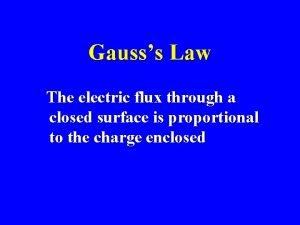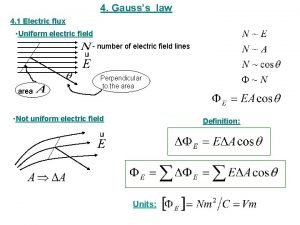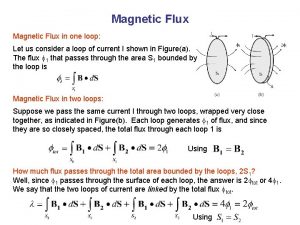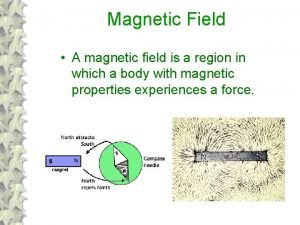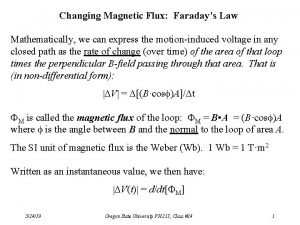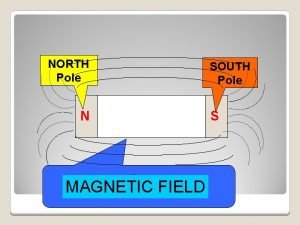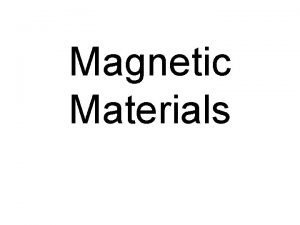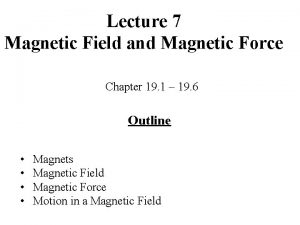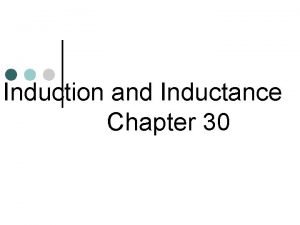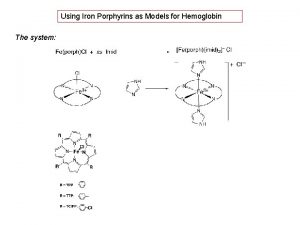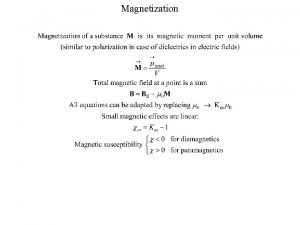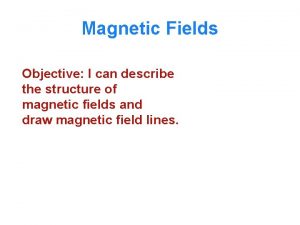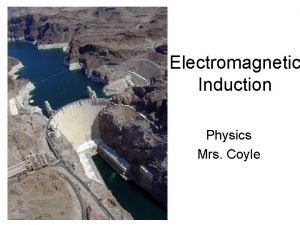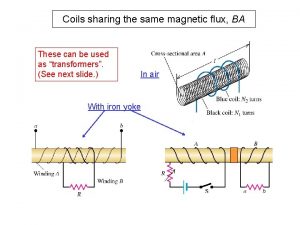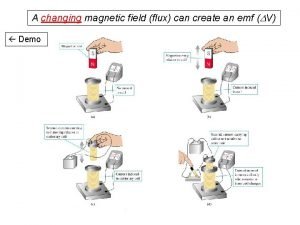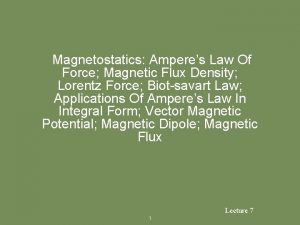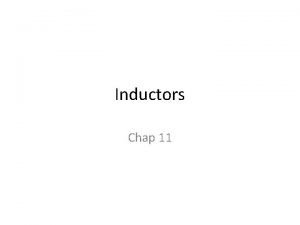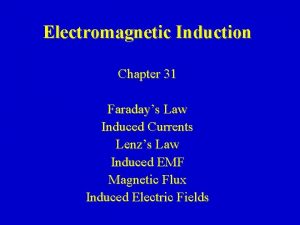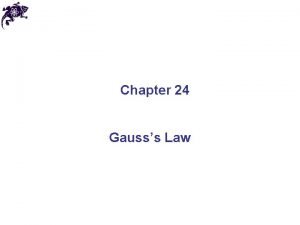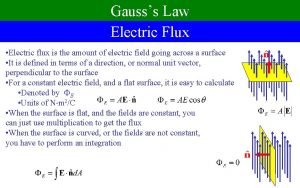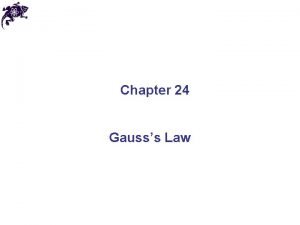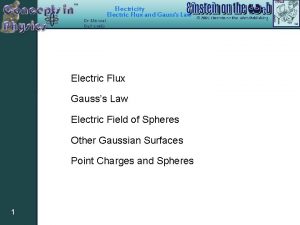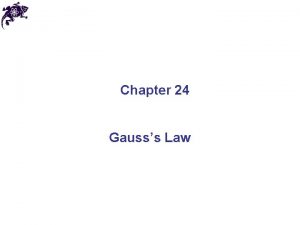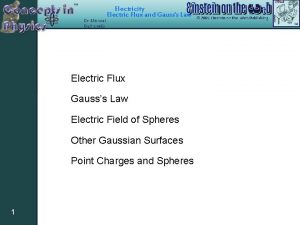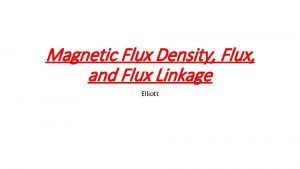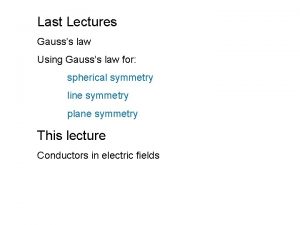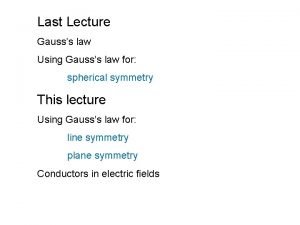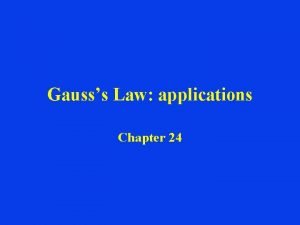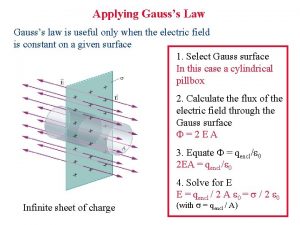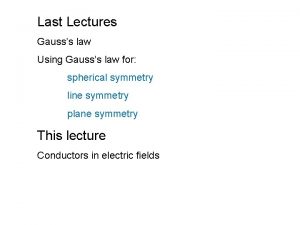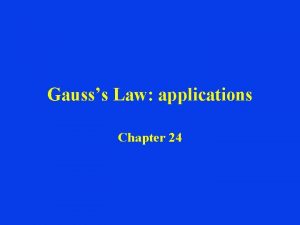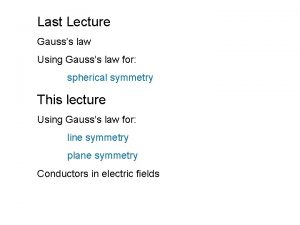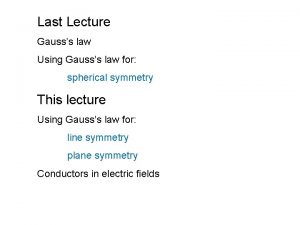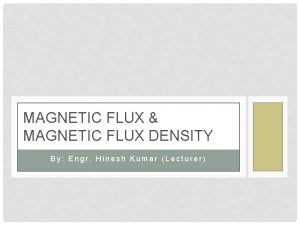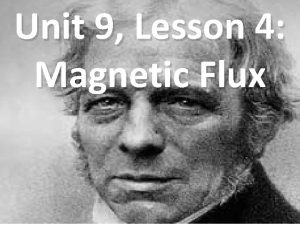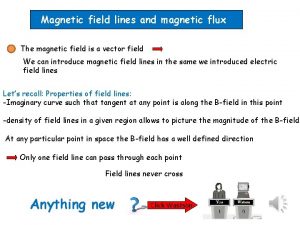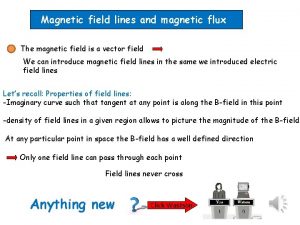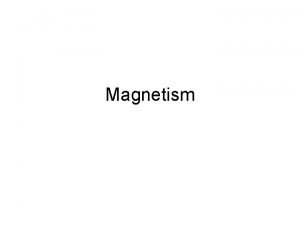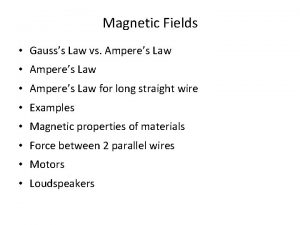Magnetic Flux Gausss Law for Magnetism AmpereMaxwell Law























- Slides: 23

-Magnetic Flux -Gauss’s Law for Magnetism -“Ampere-Maxwell” Law AP Physics C Mrs. Coyle

Magnetic Flux θ

Magnetic Flux, F: The number of magnetic (flux) field lines which pass through a given cross-sectional area A Units: F webers B Tesla A area m 2 q angle formed between B and the normal to the loop (area vector A) The area vector A is perpendicular to the surface A and has a magnitude equal to the area A.

When B is perpendicular to the loop? F = BA Why?

Which has the largest magnetic flux? Answer: A


When B is along the plane of the loop? • Hint: q is the angle formed between B and the normal to the loop.


Gauss’ Law in Magnetism • Magnetic fields do not begin or end at any point – The number of lines entering a surface equals the number of lines leaving the surface • Gauss’ law in magnetism says:

Ampere’s Law – General Form • Also known as the Ampere-Maxwell law • Where is the electric flux. • The second term Id is called displacement current and is caused by electric fields that vary with time as in a capacitor.

Example: Capacitor • Consider surfaces S 1 and S 2. • The current through S 1 is I. • There is no conducting current through S 2 • The electric flux through S 2 is EA – A is the area of the capacitor plates – E is the electric field between the plates • If q is the charge on the plate at any time, FE = EA = q/eo

Example: Capacitor cont’d • The displacement current is the same as the conduction current through S 1 • The displacement current on S 2 is the source of the magnetic field on the surface boundary

• Magnetic fields are produced both by conduction currents and by time-varying electric fields

Classification of Magnetic Substances • Paramagnetic and ferromagnetic materials are made of atoms that have permanent magnetic moments • Diamagnetic materials are those made of atoms that do not have permanent magnetic moments

Classifying Materials by Permeability • Materials can be classified by how their permeability compares with the permeability of free space (mo) • Paramagnetic: mm > mo • Diamagnetic: mm < mo

Examples of Ferromagnetic Materials – – – iron cobalt nickel gadolinium dysprosium

Domains The domain is an area in a material within which all magnetic moments are aligned

Domains, Unmagnetized Material • The magnetic moments in the domains are randomly aligned • The net magnetic moment is zero

Domains, External Field Applied

Meissner Effect • Certain types of superconductors also exhibit perfect diamagnetism – This is called the Meissner effect • If a permanent magnet is brought near a superconductor, the two objects repel each other

Earth’s Magnetic Field • Like a bar magnet • The Earth’s south magnetic pole is located near the north geographic pole • The Earth’s north magnetic pole is located near the south geographic pole • Magnetic Declination

Dip Angle of Earth’s Magnetic Field • If a compass is free to rotate vertically as well as horizontally, it points to the Earth’s surface • The angle between the horizontal and the direction of the magnetic field is called the dip angle – The farther north the device is moved, the farther from horizontal the compass needle would be • The compass needle would be horizontal at the equator and the dip angle would be 0° • The compass needle would point straight down at the south magnetic pole and the dip angle would be 90°

Reversals of the Earth’s Magnetic Field • The direction of the Earth’s magnetic field reverses every few million years – Evidence of these reversals are found in basalts resulting from volcanic activity – The origin of the reversals is not understood
 Confidential
Confidential Flux weber
Flux weber Gausss law
Gausss law Gausss law
Gausss law Chapter 24 magnetism magnetic fundamentals answers
Chapter 24 magnetism magnetic fundamentals answers Magnetic flux and inductance
Magnetic flux and inductance What is radial magnetic field
What is radial magnetic field Express magnetic flux mathematically
Express magnetic flux mathematically Solenoid right hand rule
Solenoid right hand rule Hysteresis loop
Hysteresis loop Magnetic field unit
Magnetic field unit Magnetic flux formula
Magnetic flux formula Flux magnetic
Flux magnetic Flux magnetic
Flux magnetic F=bil triangle
F=bil triangle Magnetic flux
Magnetic flux Flux=ba
Flux=ba Flux magnetic
Flux magnetic Fundamental laws of magnetostatics
Fundamental laws of magnetostatics Inductance
Inductance Electromagnetic induction law
Electromagnetic induction law Magnetic moment and magnetic field relation
Magnetic moment and magnetic field relation Magnetic force particle
Magnetic force particle Gauss law of magnetism
Gauss law of magnetism


